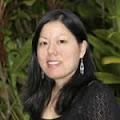
Best of BbWorld: How to Take Online Learning to the Next Level: Highly Interactive Virtual Education
Overview of FLVS
- Enrollment is at over 250,000+ - grown explonentially, from 10,000 in the year 2000-2001
- 1300 employees - 1000 are teachers
State pays only when the student has successfully completed
-
Implement Grade forgiveness - try to get them to pass, retake courses or resubmit assignments until it meets standards
-
Every 3-5 years - rewrite course (80%+ of the content)
30-40% of students who enroll are in a failing situation
- Work with all 67 school districts in Florida. 17 schools have opted to franchise from FLVS which allows them use of content, CMS and professional development
- Look at login stats and see that students typically login from 10am - 10pm
- Each student is paired up with an FLVS instructor. Instructor makes monthly phone calls to parents and sometimes weekly phone calls with students
Gaming Course - Conspiracy Code

- Semester long American History course (1 credit)
- Students are in a virtual game, problem solving, learning about history
- 51 assessments
- Data maps to help with gathering information
- Used shell of game to create reading program. Plans to develop more game-based courses (5-6 months development time)
Archive Link: https://blackboard.webex.com/blackboard/lsr.php?AT=pb&SP=EC&rID=48537037&rKey=7108554bda89db6e

Comments
- their students tend to score higher on state exams than those in traditional schools
- 45 states & 34 countries use their curriculum in some form
- students can enter & finish the courses at anytime during the year.
- for a demo of Conspiracy Code visit http://360ed.com/
Good stuff!